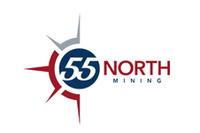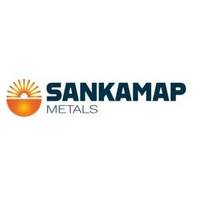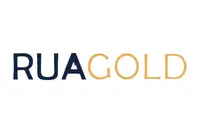Under the Sea: The Untapped Potential of Shallow Seabed Mining

Offshore exploration done right and sustainably can provide a whole new world of opportunities for both production and investment.
Removing minerals from the floor of the sea is called seabed mining, a term that encompasses both deep-sea mining and shallow mining methods. Mining at depths of 200 metres or less is considered shallow seabed mining.
Dramatic price increases of numerous minerals, coupled with the demands of growing economies, have made undersea mining ventures economically viable and the potential return on investment significant.
According to the National Oceanic and Atmospheric Administration, humans know more about Mars and the moon than about the ocean floor. As of 2022, more than 70 percent of the ocean is still unmapped.
Potatoes and smoke
When hot fluids rise into the ocean from within the earth's crust and mix with cold seawater, the rapidly cooled minerals held in the fluids form deposits on the seabed.
Sometimes these fall to the seafloor in small chunks, as a form of mineral “potatoes.” During the 1970s and 1980s, the imagined wealth potential of gathering manganese nodules scattered across the ocean floor sparked calls for international regulations to govern seabed mining.
Other times, the hot fluids cool to form what geologists call seafloor “chimneys,” so named because as those fluids pour out of the sea bottom, they appear to be underwater “smoke.”
Some scientists suspect land sulfide deposits were formed similarly. Slowly, over millions of years, they rose with islands and continents above sea level. Sulfide deposits are a source of copper.
Increasing demand for batteries and solar panels is driving interest in shallow water marine deposits for their high grades of minerals. Recovering minerals from the seafloor has become less expensive, making for a stronger business case.
Seabed mining regulations
At the 1994 UN Convention on the Law of the Sea (UNCLOS), the International Seabed Authority (ISA) was created and tasked with ensuring marine environments are protected from the harms of resource extraction. However, it has not yet adopted a formal set of regulations for deep-sea mining as of 2024.
Nations are able to explore their own territorial waters for resources. However, many potential mining sites are found under the Pacific Ocean, outside many nations’ territorial waters. UNCLOS refers to the deep seabed beyond national jurisdiction as “the Area.”
The ISA issues licences to applicants sponsored by nations that meet the regulations protecting ocean environments. Sponsor nations must conform to international law and have legislation that regulates sponsored mining companies.
When that legislation is not in place or ISA deems it inadequate, non-conforming sponsoring nations are potentially subject to risk under international law. Additionally, the mining industry in those nations will remain unregulated.
The mining industry formed the International Marine Minerals Society and established a member code of conduct that sets out the environmental principles for marine mining.
Adopting the principles and guidelines is voluntary. Instead of imposing specific practices, the code gives guidance on shared values that agencies, scientists and participants are encouraged to follow.
Environmental considerations
Seafloor dredging lifts wanted and unwanted material — including toxins — into the ocean, where it spreads and settles.
Dredgers return the valueless matter to the sea. No study has proven that it becomes sediment and blankets not only the seabed but also marine flora and fauna, or that particulate suspended in the ocean might disorient ocean animals.
Noise carries far underwater. Mining machinery may affect ocean organisms and plants in ways that humans don’t notice.
Indirect effects may take longer to see. Even if seabed mining affects only a single creature or plant, that’s enough to upset the delicate complexity of the food chain.
Ocean midwaters are over 90 percent of the biosphere, contain more fish than all the fish caught annually worldwide, join surface and seafloor, and regulate cycles of nutrients and climates. Nobody truly knows how much nor how far seabed mining affects midwater ecosystems.
What’s needed is a greater understanding of the effects of seabed mining. To that end, scientists at the University of Hawai'i at Mānoa published a paper positing deep-sea mining risks in both the area immediately around any mining operations and the water above the seabed.
The university's paper advises readers of the potential dangers that ought to be studied, so that resource retrieval managers can decide what seabed mining techniques to use.
Shallow water exploration and mining project values
During the 1960s Marine Diamond mined almost 1 million carats from the Namibian coast. Off the continental shelf of southern Africa, de Beers acquires a sizable segment of its diamonds.
Deep-sea mining, however, has yet to yield similar outcomes. In the 1980s, for example, investors attempted to gather manganese nodules found on the seabed. They couldn’t turn a profit, despite spending close to half a billion dollars on prospecting.
Since then, industry suppliers have been designing and testing equipment for undersea conditions. Many of these tools — corers, crawlers, cutters, drills, dredgers, platforms and pumps — are robots.
Currently, western South Pacific seabed vent fields are where mining operators seek massive sulphide deposits. Vent fields close to island nations avoid complications of seabed mining under international waters. Papua New Guinea has leased hundreds of thousands of square kilometres of its seafloor for exploration.
Mineral-rich seabed deposits and technology advancements have spurred interest in mining diamonds, iron sands, cobalt manganese crusts, phosphorite and manganese nodules and rare earth elements.
Few companies engage in seabed mining, leaving most known deposits on continental shelves unexploited.
While technically not seabed mining, Dome Gold Mines (ASX:DME) wants to extract heavy minerals from the sands near the mouth of the Sigatoka River in Fiji. The sands contain magnetite, used to make steel and cement.
Manuka Resources’ (ASX:MKR) Taranaki vanadium titanomagnetite iron sands project in New Zealand's exclusive economic zone is one of the largest drilled vanadium projects in the world.
Manuka aims to have a low impact on the environment, maintaining “very low carbon emissions (<50 percent) compared to other hard rock iron ore deposits.” The project uses no heavy machinery mining fleet, open pits, waste dumps, haul roads and it does not require energy-intensive crushing and grinding circuits, railroad or ports.
According to the company, Taranaki would not use added chemicals in tailings or processing and does not impact fish, dolphins or whales.
Investor takeaway
Amid a rising demand for minerals needed for global decarbonization and electrification and to support multiple industries, offshore exploration done right and sustainably can provide a whole new world of opportunities for both production and investment.
Dave Chappelle is a freelance writer based in Ontario.
This INNSpired article was written as part of an advertising campaign for a company that is no longer a client of INN. This INNSpired article provides information which was sourced by INN, written according to INN's editorial standards, in order to help investors learn more about the company. The company’s campaign fees paid for INN to create and update this INNSpired article. INN does not provide investment advice and the information on this profile should not be considered a recommendation to buy or sell any security. INN does not endorse or recommend the business, products, services or securities of any company profiled. If your company would benefit from being associated with INN's trusted news and education for investors, please contact us.




